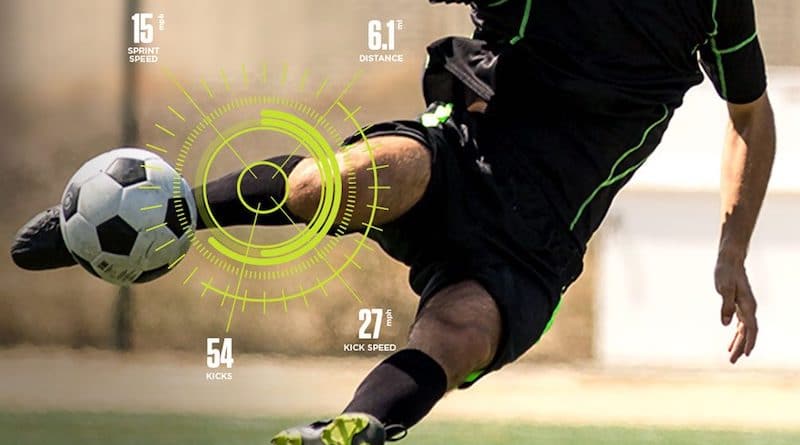Some athletes’ training methods have evolved as a result of wearable technology. With sensors, athletes and their coaches can get data on everything from heart rate to acceleration to sleep. Athletes can use this information to create better training plans, spot their deficiencies, and monitor their progress toward their fitness objectives. There are now many different subcategories of wearable technology, many of which have experienced tremendous growth and investment. The way elite and less-elite athletes get ready for competition has changed significantly as a result of these. In order to deliver the finest solutions to the market’s audience, certain well-known suppliers of online gaming solutions, such as GammaStack, are also utilizing emerging technologies like wearable technology. Companies are striving to take advantage of the greater exposure and access provided by media channels as wearable technologies have filtered down into the mass market.
How does wearable technology work?
The enormous spectrum of practical wearable technology available today includes smartwatches, activity trackers like VR, smart jewelry, web-enabled eyewear, Fitbit Charge, and Bluetooth headphones, which are some good examples. Batteries, Microprocessors, and online connectivity are the mainstays of wearable technology, allowing the synchronization of the collected data with other electronics like computers or mobile devices.
Depending on the subcategory they fall under—such as health, fitness, or entertainment—wearables operate differently. Sensors that track bodily movements, provide biometric identity, or aid in location tracking are built into wearables. Some wearables work without having direct touch with the user, even though the majority are either worn on the body or attached to clothing. This technology is simple to use.
While some gadgets utilize optical sensors to measure glucose or heart rate, other wearables use remote smart sensors and inertial measurement units to detect motion and speed. These wearable tech devices all share the capability to continually monitor data. For example, the most widely used wearables, activity trackers, or smartwatches, have straps that fit around the customer’s wrist and monitor their regular chores or vital signs.
Applications of wearable technology
Popular consumer electronics that incorporate wearable technology include activity trackers and monitors. Wearable technology is currently utilized in a variety of applications, such as consumer goods, thanks to recent advancements in the internet of things, artificial intelligence, healthcare, professional sports, and navigation systems. The following is a list of the top applications for wearable technology in both the present and the future:
Technology for the human body
The apex of wearable technology is this next-generation device, an ultra-thin e-skin patch with a tiny wireless transmitter that may be attached to the wearer and is worn for up to a week. For tracking chronic illnesses like diabetes and heart failure, this competent wearable is a starting step. It can be useful to collect and take into account electrical signals like heartbeats, muscle contractions, and pulse rates. These signals can then be shared with medical specialists via the cloud so they can check on the user’s vital signs from a distance.
Health monitoring
People utilize wearable technology to evaluate their caloric intake, track their training schedules, and track their pulse rate, heartbeat, and other vital signs. For instance, Apple upgraded its Cardiogram app by adding a new sleeping beats-per-minute feature that keeps track of patients’ heart rate variations. As an illustration, Apple recently updated its Cardiogram app and added a new sleeping beats-per-minute feature that tracks patient heart rate fluctuations.
Entertainment and gaming
For all kinds of leisure, including gaming, watching movies, and virtual travel, popular VR head-mounted displays like Meta Quest, Oculus Quest, and Sony PlayStation VR are used. Sports and leisure were the initial categories to employ VR headsets, smart glasses, and consoles in the market. It offers better opportunities for businesses to use these wearable technologies in the gaming industry.
Sports and Fitness
Wearable athletic equipment is used in games and can be attached to equipment like bats and balls or woven into the material of the equipment. Through connected technological devices like computers, coaches receive real-time data from GPS and Bluetooth-connected devices for analysis. Along with wearable sports equipment, well-known wearable technologies like Fitbit, Apple Watch, Garmin, and Samsung Galaxy Watch are widely utilized to track many aspects of the player’s health and performance data.
Examples of wearable technology
Some common examples of wearable technology are as follows:
- Smart rings, bracelets, watches, and pins are examples of wearable technology. Smaller devices frequently interface with and display information via a mobile application.
- For the goal of monitoring and transmitting biological data, body-mounted sensors are affixed to the body.
- Built-in technology allows for a range of functions to be carried out by smart clothing, including fitness or health monitoring, interfacing with phones and other devices, and altering fabric properties to match the user’s preferences, activities, or environment.
- Fitness trackers frequently take the form of straps, headbands, or bracelets that track physical activity and vital signs.
- In order to enable interaction between the real world and virtual reality, AR headsets use a real-world context and incorporate digital information into a display of the user’s surroundings.
- Artificial intelligence (AI) hearing aids can automatically adjust to the user’s environment and hearing needs while filtering out undesired noises and delivering the best performance possible.
- Virtual reality improves manufactured reality by totally replacing the user’s environment with digital data.
Final Thoughts
Wearable sporting equipment is becoming increasingly compact, potent, and economical. Sports technology businesses like GammaStack have innovated and developed products and services that are “invisible” to the athlete in order to capture data outside of the lab. While working to incorporate wearable technology into professional athletes’ daily routines, a new generation of devices appears to be emerging. The aforementioned elements guarantee that technology may significantly boost the sports industry. The sports industry has widely accepted fitness trackers, smart devices, intelligent clothing, and VR and AR headsets. It is gaining popularity and is poised to bring about a revolution in the future. Thus, if you want to start your sports business, wearable technology could be a profitable choice for your business growth.











































